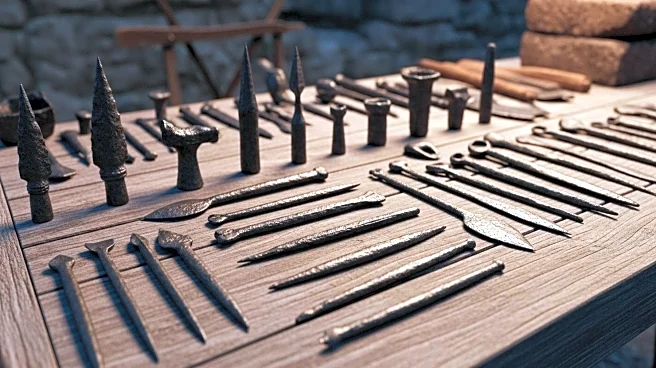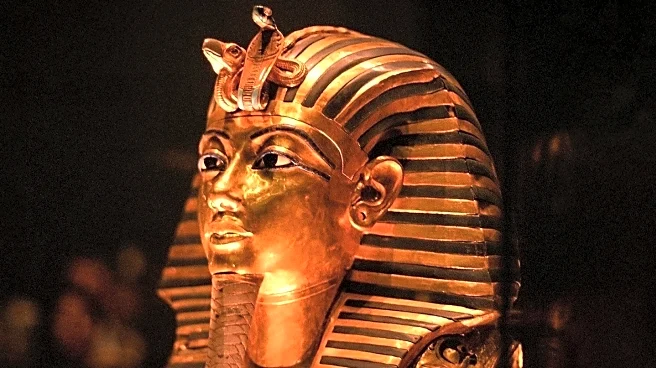What's Happening?
Archaeologists from the University of Leicester have made significant discoveries beneath a marketplace in Leicester, UK, revealing artifacts spanning 2,000 years of human activity. The excavation, conducted alongside construction crews redeveloping the market square, uncovered Roman pottery kilns, coins, jewelry, and traces of Anglo-Saxon settlers. Among the most notable finds is the grave of a Roman infant and the remains of a 16th-century dungeon described historically as a 'vile prison.' The dungeon is believed to have been part of the Gainsborough Chamber, a high-status civic building used for judicial proceedings and celebrations until its demolition in 1748. The excavation leader, Gavin Speed, highlighted the opportunity to explore an area of Leicester that has remained relatively untouched, providing insights into the city's historical occupation.
Why It's Important?
The discoveries at the Leicester marketplace offer valuable insights into the historical development and cultural heritage of the city. By uncovering artifacts from different eras, including Roman and Anglo-Saxon periods, the excavation enriches understanding of Leicester's past and its evolution over centuries. The findings contribute to the broader field of archaeology by providing tangible evidence of historical lifestyles, industry, and civic activities. This knowledge not only enhances academic research but also has the potential to attract public interest and tourism, benefiting the local economy. The display of these artifacts could foster community engagement and appreciation for the city's rich history.
What's Next?
The University of Leicester Archaeological Services plans to continue working with contractors to extract further information from the site. There is an intention to display some of the remarkable finds for public enjoyment, which could involve setting up exhibitions or integrating the artifacts into local museums. The ongoing excavation may lead to additional discoveries, further expanding the historical narrative of Leicester. Local authorities and historians are likely to collaborate on preserving and promoting these findings, potentially influencing future urban development and conservation efforts in the area.
Beyond the Headlines
The excavation raises ethical considerations regarding the preservation of historical sites amidst urban development. Balancing construction needs with archaeological preservation requires careful planning and collaboration between developers and historians. The discoveries also highlight the importance of investing in archaeological research to uncover hidden aspects of cultural heritage. Long-term, these findings could influence educational programs and inspire future generations to explore archaeology and history.











